The New Social: Sarah McIntyre
Career boosting, selling platform, discussion generating – social media for freelancer illustrators has much to offer. Derek Brazell was given expert insight from illustrators prominent on various social media platforms for The New issue of Varoom, asking questions on the pros and cons, benefits, interactions and audiences and contrasting takes on selfies.
Sarah McIntyre writes and illustrates children’s books and comics, and loves working collaboratively with friends, having recently set up the Virtual Studio on Twitter – @StudioTeaBreak. Her recent books include Pugs of the Frozen North, with Philip Reeve, Jampires, with David O’Connell and Dinosaur Police. McIntyre uses social media as a collaborative tool and to highlight issues within the illustration industry.
This full interview with Sarah McIntyre for The New Social, expanded from the published version in Varoom, reveals the gains and frustrations of social media involvement, including why it is “almost like joining a religion.”
For more unseen content from The New Social see The New Social extra featuring Ping Zhu, Frannerd, Holly Exley and duo Cachetejack.
The full article is available in Varoom 32 The New out now
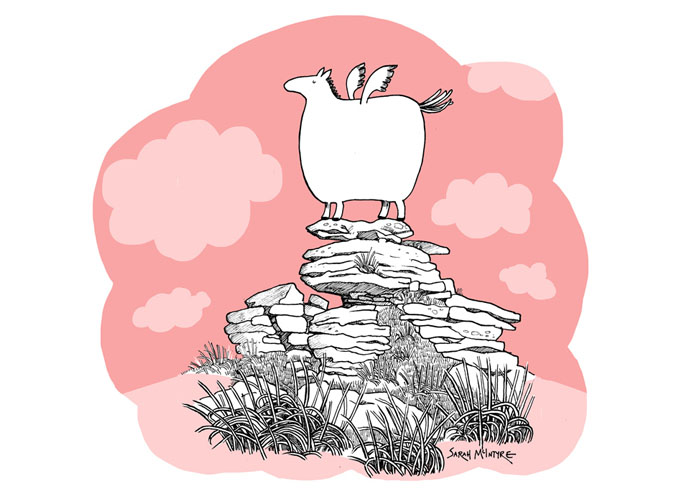
Varoom: What do you see as the tangible benefits of being active on social media?
Sarah McIntyre: I joined the LiveJournal community in 2006 and owe a lot of my illustration to the ideas, inspiration and training I found from looking at the work of comics creators, taking part in challenges and chatting in the comments sections. I worked from home for five years before setting up a south London illustration studio with friends in 2009, and being alone so much had been doing my head in. But the LiveJournal blog helped a lot, and when I met people off-line, I already knew a lot about their work, so introductions were far less awkward. People often criticise Twitter for being a cruel place, but I find if I bring the ol’ LiveJournal creative attitude to it, it can be a comforting place of people getting excited and inspired by what they and other people are making, and it helps isolated creators feel less lonely. Drawing hashtags can be almost like office water coolers, fun places to gather.
I’ve also found social media a very useful place to bring up issues such as the #PicturesMeanBusiness campaign. When someone doesn’t credit an illustrator, they pay MUCH more attention if I post articles on my blog and bring up illustrator credit omissions on Twitter than if I were to approach people by e-mail or leave a note in the comments to other people’s articles.
Have you benefited from interaction with art directors, and has that resulted in interest or commissions?
Yes, I think people get a sense that they know me from Twitter and my blog, and it makes me feel very approachable to them. I think most of my editors would have discovered me through my agent, but I get a lot of invitations to festivals and schools because of social media, and doing events can be a great supplement to my income. If I had more time, I think I could sell a lot of original artwork via social media – things sell quickly when I post them – but right now I’m just managing to keep up with book deadlines.
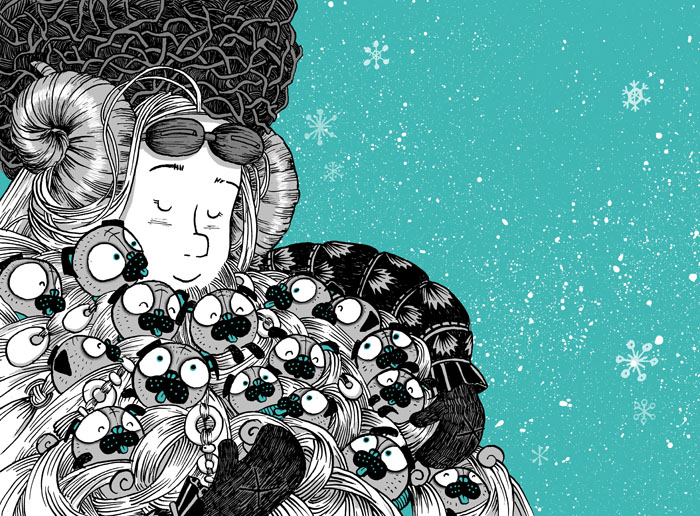
Which platform has been most successful for you? And is cross promotion of platforms useful (i.e. pointing to Instagram from Twitter)?
I like using a combination of my blog and Twitter. My blog gives me the space to write something thoughtful, and Twitter gives me a place to post a link to it where people will see it and share it. The problem with tweets and Facebook posts is that they slip down the stream and are pretty much lost. I often go back and look at old blog posts to recall what I’ve been up to, or link to old articles if they suddenly become relevant again. I do have an author Facebook page, but I don’t have time for the way Facebook keeps my posts fairly hidden to other people unless I’m very active on it. I don’t like it when people set up their Instagram accounts to automatically tweet pictures; the picture doesn’t come up immediately, you have to click through an ugly little link and the picture can take awhile to load if you’re on your mobile or slow wifi. And it seems slightly rude to tweet or auto-tweet Facebook links; not everyone’s on Facebook and they can’t look at posts unless they register.
Which do you think are your most viewed post (and why could that be)?
Sometimes a blog post that I didn’t mean to make a big deal about will get shared a lot, such as a post I did about the hassle I was getting while going for daily runs. Or I’ll draw a picture that will be timely and hit a nerve, like a picture I drew right after the Charlie Hebdo attacks, which got shared thousands of times on Twitter, and the follow-up article with information about how people can get into making comics if they don’t know where to start.
Other times I’ll write an article that won’t get massive attention at first, such as my blog post about the #PicturesMeanBusiness campaign. I really wanted people to read that one, so I pinned it to the top of my Twitter feed and now loads of people have read it, and keep sharing it when they discover it.
I’ve written a few posts that are born out of hard experiences and people find them very helpful, such as ’25 Tips for Hosting an Awesome Author Visit’, so that gets regularly shared. And sometimes I just have a lot of fun creating a story online with Philip Reeve; last year a lot of people started reading The Dartmoor Pegasus and it was a lot of fun. Here’s the final post with the whole story (for which The Telegraph paid us a good fee to reformat for a double-page spread short story in their newspaper).
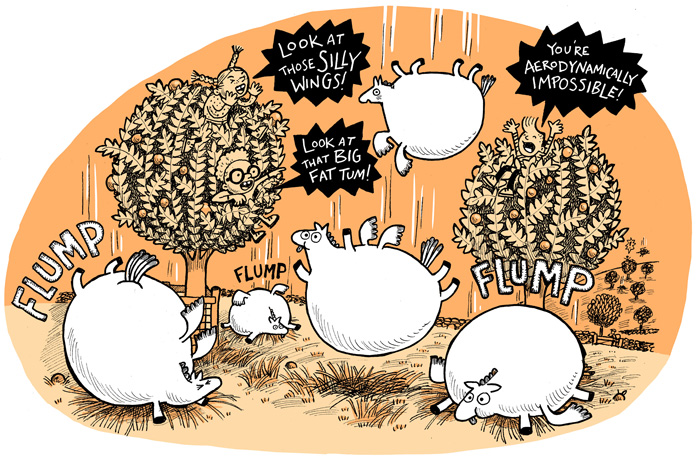
Is social interaction with others a positive element for illustrators?
It can be! Social media seems to work better if we see ourselves working together rather than competing. The way I see it, the UK’s a small island and we’re trying to make the rest of the world understand what awesome illustrators we have here. If I just talk about my own work, it comes across as a bit spammy. (Of course I’d say my work is good and you should buy my books.) But if I talk about other illustrators and comic artists I admire, people are much more likely to pay attention and explore the links, it creates a friendly atmosphere, and usually people end up checking out my work, too, because they see me as someone who knows a bit generally about illustration and drawing. I don’t big up illustrators to get ahead, only if I genuinely admire their work or something about their approach to working, and I think people come to trust that. It’s wonderful when we get together with the people we’ve been bigging up; we can all happily geek out together about each others work.
Have there been any negative aspects to your social media success? Do you believe there should be appropriate behaviour/etiquette on social media?
The hardest thing about social media is the way it gets into my brain and changes the way I think. It’s almost like joining a religion. Saints were supposed to be praying all day long, directing their thoughts to God, surrounded by a cloud of invisible angels. If we’re on social media, we’re also surrounded all day by this invisible cloud of people right at our fingertips, and I can get so caught up in thinking communally that I forget to pay attention to myself and my surroundings. When I get caught up with tight work schedules and don’t have time to meet up with people, social media gives me the sense I’m not alone. But I need to make an effort to meet up with people face to face, and not delude myself that I can have all my interactions online or I’ll get depressed.
Another thing that frustrates me about social media is that outrage seems to be its greatest currency. If people get riled up about something, they’re far more likely to retweet and share. That’s been helpful in spreading the word about #PicturesMeanBusiness; people get angry that illustrators are constantly ignored and their work posted uncredited. But I don’t want everything I do to be about outrage. Thank goodness for humour; funny stuff keeps the Internet from being a mad anger pit. And while drawing-community tweets (such as the recent #ShapeChallenge) will never go viral, it doesn’t really matter; it’s enough just to connect with a few people.
If I could recommend one piece of etiquette, it would be that people always credit an image that they post. If it’s the ‘big reveal’ of cover artwork for a book, they should say who created that artwork. If they use a picture to illustrate a point they make, they should credit the artist. People who crop signatures off artwork and repost it are the worst sort of people and should have little metal pen nibs poked into them for eternity.
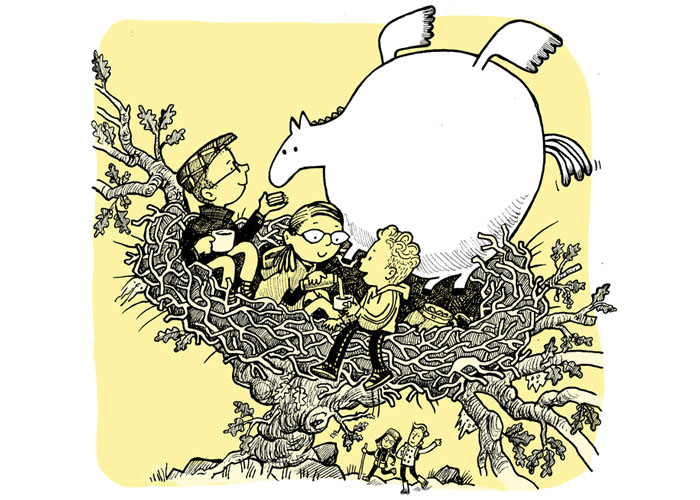
Do you need to commit significant time to social media? Do you use any time saving platforms such as Hootsuite?
I’m sure I spend more time on it than I ought to. And I briefly tried Hootsuite, but I gave up since basic Twitter on my browser was much simpler. I don’t worry if I miss people’s tweets (there are too many to follow), I just dip in and see what’s swimming by. I have the Twitter app on my phone. I use Instagram, too, but just as a sort of dumping ground for random photos; I don’t curate it very carefully as I see some people do. I think Instagram is all about hashtags, and I just can’t be bothered to do all that tagging. I use Pinterest for the sole purpose of keeping track of which hats I own. (I own a lot of hats.) People always try to sign me up for extra social media, but it’s too much, I can’t manage any more platforms without dropping another one.
I recently set up a second Twitter account – @StudioTeaBreak – so I could retweet all the #ShapeChallenge drawings, and the hashtag community could go back and see their artwork all in one place. I also set up a Virtual Studio web page – http://www.jabberworks.co.uk/virtual-studio/ – so people would feel more comfortable jumping right in with the drawing challenges. Sometimes people seem to feel they need permission to join in on hashtags or post their artwork, and I wanted them to feel welcome right away. But the webpage also gave me space to explain that I might not always be able to respond right away. If I start feeling a slave to Twitter, I need to take a break.
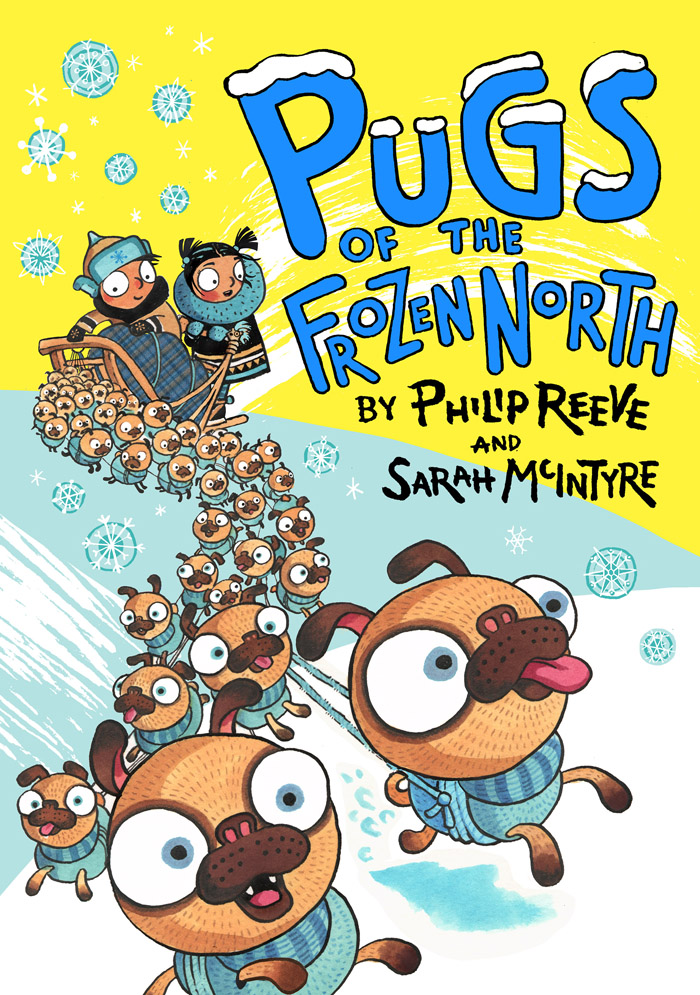
Platforms such as Behance and The Dots, have differing offers but many are aiming to become relevant for creatives by making it possible to have free portfolios of work. LinkedIn has adapted to those wishing to show visual material.
How do you see social media and networking platforms developing in relation to your profession?
I hate LinkedIn; it’s awful, like bedbugs. I tried to exterminate my account and it will NEVER let me go. Stephen Collins did a hilarious cartoon about trying to escape the clutches of LinkedIn. The algorithms of Facebook feel totally lame; I don’t want to be ‘rewarded’ with exposure to my friends list for wasting half a day on it. The thing I like most about Twitter is that it’s pretty casual, there’s no expectation: I can turn up, use it, not use it, browse it, ignore it, and the Twitter stream flows by just the same. Posts with images tend to garner the most clicks and retweets, which is perfect for illustrators; images are what we do best. Sometimes being seen to be available can be a curse; people get annoyed at me when they don’t get an instant response or I don’t take up their campaign or donate to their charity.
What would I like to see for social media? As long as we can post images that are clear and large enough, I don’t think the platforms matter too much, it’s more about how we use them. I’m still using LiveJournal as my home base, which I know is SO uncool, but it works for me. It gives me space to write what I want to write and post photos, and if I create things that are interesting enough for people to want to see, they won’t care where I post it. If people stop looking, my blog goes back to being a personal sketchbook diary, and I’m fine with that.
Back to News Page
